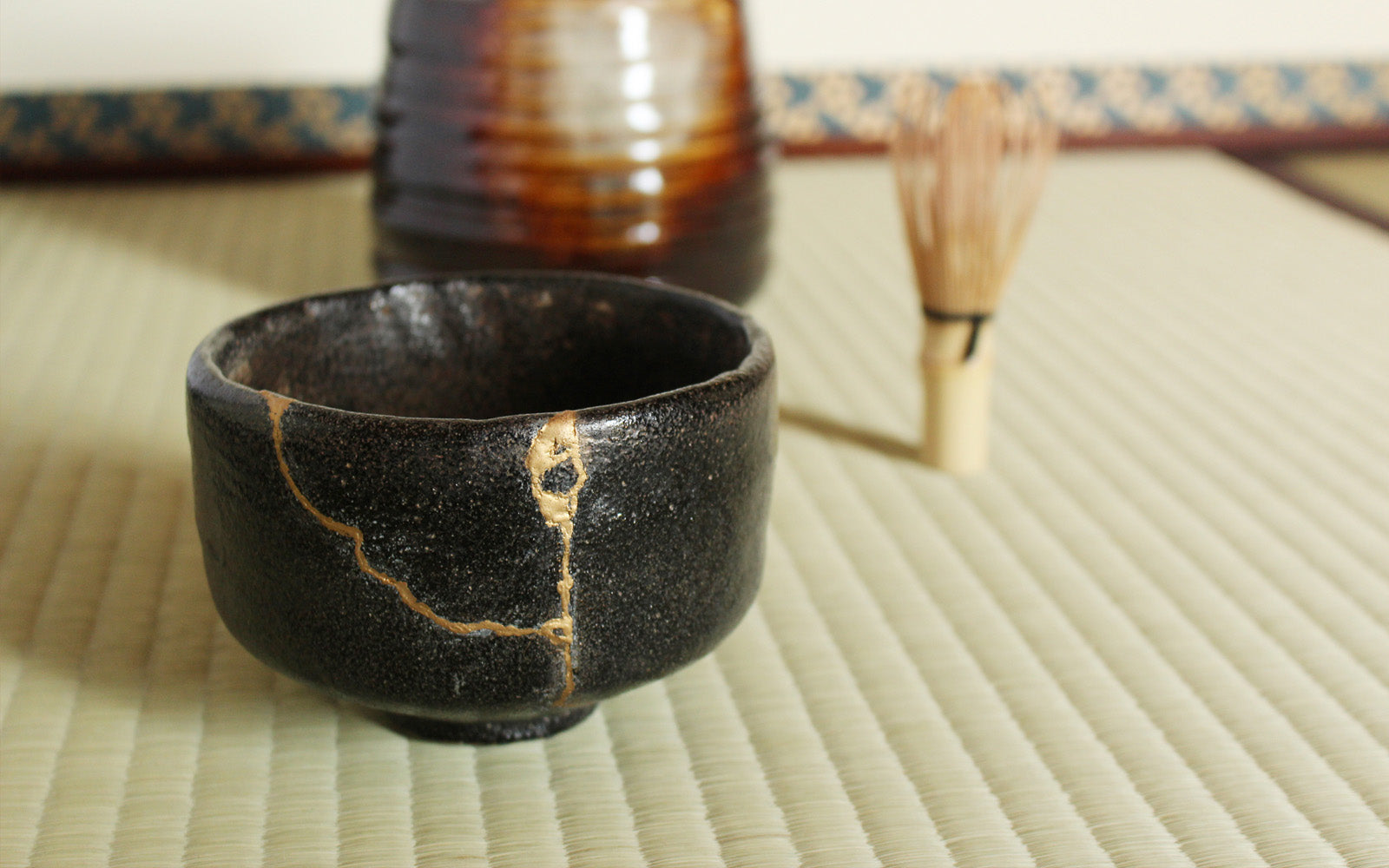
Kintsugi:Golden Joinery
Kintsugi is the traditional Japanese process of giving new life to broken objects by mending the shattered pieces with gold. The pottery is repaired using a liquid gold or a lacquer dusted with either powdered gold, silver, or platinum. The idea is poetic and simple, a concept of embracing damage to create something better from something broken. The art form is reflected in the Japanese philosophy and aesthetic of Wabi-Sabi, which honors and accepts the beauty of imperfections. The idea is not to find beauty in the traditional western ideals of symmetry and continuity but rather in the Buddhist concept of impermanence and imperfection. The cracks in a ceramic bowl don’t represent the end of that object’s life, but rather a fractured moment in its history. An object’s flaws are essentially highlighted with gold, making the object stronger and more beautiful in the places it was thought to be broken.

While it is undetermined when exactly kintsugi was put into practice, legend has it the technique began around the fifteenth century and resulted from an unhappy ruler’s broken tea cup. Ashikaga Yoshimasa, the eighth shogun of the Ashikaga shogunate, broke one of his favorite cups and sent it to China in hopes of getting it repaired. Yoshimasa was unhappy with the results. Although the cup seemed damaged beyond repair, the shogun sent it to a Japanese craftsman in hopes of still salvaging the object. The craftsman mended the cup’s cracks with lacquered resin and powdered gold and Yoshimasa was impressed. Artisans soon began using laquer and a gold pigment to put broken ceramics back together.
Kintsugi allows for the creation of truly unique art because of the irregular patterns that form when ceramic shatters. There are a few main types of kintsugi techniques:
Crack Method: Traditional method of using gold dust or lacquer to attach broken pieces, creating thin lines of gold that run across the object.
Piece Method: Gold or a lacquer compound is used more generously as a replacement when a significant piece of the object is missing.
Joint Method: Various fragments replace missing pieces from the original object to create a patchwork effect.
The meaning behind kintsugi transcends the art form. Rebirth requires transformation. Perfect is less beautiful than broken. Scars do not need to be hidden. Kintsugi represents the fractured uniqueness in all of us and the ability to create new beginnings from broken endings.



